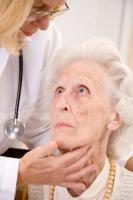Performing a Systems Review
When assessing a wound for the first time, it’s important to look at extenuating factors that may have contributed to formation of the wound, as well as factors that may influence healing of the wound. In addition to looking at lifestyle, past and current medical and wound history, diagnostics such as lab tests, functional status and medications, performing a systems review is important.
Performing a systems reviews serves four main purposes:
- Allows you to identify reasons for consultation to other therapies, such as a physician or an occupational therapist
- Allows you to identify risk factors in areas other than the integumentary system that warrant intervention to aid wound healing i.e. a patient confined to a wheelchair who has a sacral ulcer may benefit from a visit to a seating clinic
- Allows you to identify signs and symptoms of disease processes that may impact wound healing and treatment interventions i.e. diabetes
- Allows you to identify problems with cognition, learning and communication that may influence how you choose to disseminate information to the patient and caregivers
Systems that should be reviewed include:
- Cardiovascular/pulmonary– heart rate, respiratory rate and blood pressure should be assessed, and values falling outside the norm should prompt you to determine the cause. Blood pressure should also be obtained. Check for the presence of edema, as this may indicate cardiovascular disease that can impair healing. Obtain pulse oximetry to assess the patient’s level of oxygenation. Patients with heart or lung disease may have impaired oxygenation which may impact wound healing.
- Musculoskeletal– screen for range of motion, muscle and/or joint pain, equal strength bilaterally and patient posture/positioning. Abnormalities of this system may impair the patient’s ability to change position to relieve pressure, or may lead to areas of increased pressure which can impede wound healing. Chronic pain may affect adherence and affect mood.
- Gastrointestinal– adequate nutrition is necessary for wound healing. Poor nutrition will delay wound healing and can increase the patient’s risk of developing infection, as well as impair the patient’s ability to fight infection should it occur. Perform nutritional screening. In addition, ensure that there is not a “fixable” cause for poor eating habits, such as poor dental health.
- Urogenital– Screen for symptoms of urinary infection or incontinence by asking the patient about urination habits. This is particularly important for patients with sacral and coccyx wounds, as incontinence can impair wound healing and cause infection. Abnormal urination patterns may also signal underlying disease, such as diabetes or infection which must be addressed in order to facilitate wound healing.
- Integumentary– evaluating the integumentary system consists of examination of exposed skin, looking at the integrity of the skin, the color and temperature of the skin, presence of scars, presence of swelling or edema and nail/hair growth. All of these together will provide a clear picture of skin health, as well as provide clues to underlying problems which may impact wound healing.
As you can see, evaluation of patients with wounds involves far more than simply examining the wound. Performing a targeted systems assessment will allow you to identify any health problems that may influence wound healing, as well as prompt referral to appropriate health professionals.
If you are interested in learning more about wound assessment, visit Wound Educators, the place to go for wound education and wound care certification.
Sources:
Meyers, B (2008). Wound Management: Principles and Practice. 2nd edition. Pearson Prentice Hall. Upper Saddle River, New Jersey.
Hess, T (2011). Checklist for factors affecting wound healing. Advances in Skin and Wound Care, 24(4); p 192.

